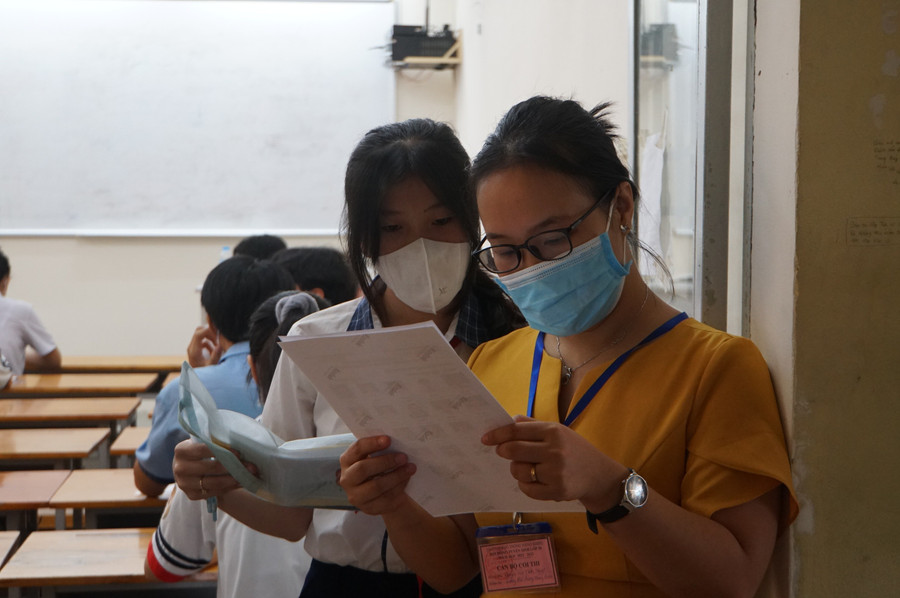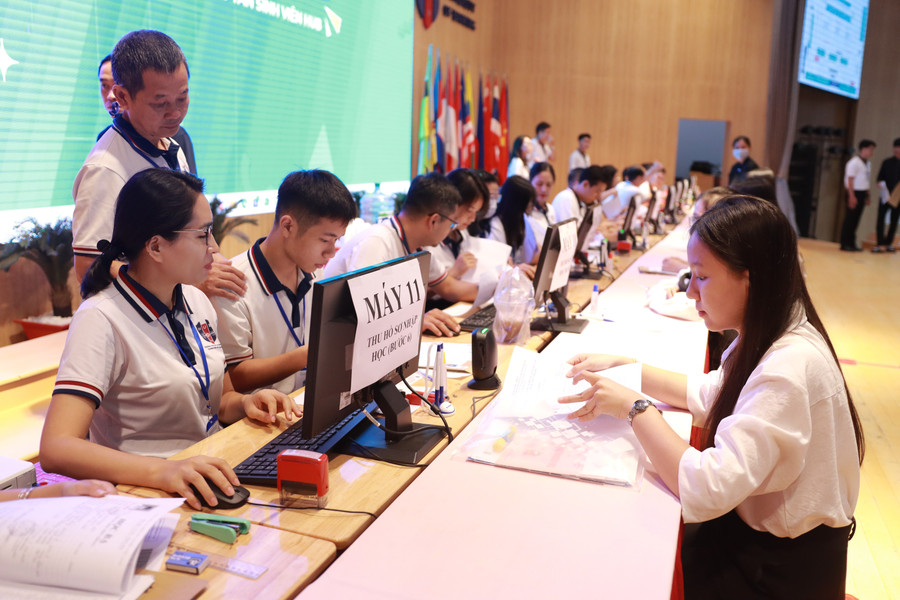>> Lesson 1: Transformation alongside challenges
A streamlined organization, but a heavy workload.
After the merger, the size of the Departments of Education and Training doubled or tripled. Some Departments of Education and Training may have to manage thousands of educational institutions, from public to private, from preschool to secondary school and vocational training. Human resources decreased through downsizing, but the workload increased. Without technological support, the risk of system overload and paralysis is unavoidable.
At the commune level – where many functions were taken over from the district level after the merger – officials often have multiple responsibilities, lack technological skills, and are vulnerable to crises when they don't receive timely training and support. The lack of uniformity in technological capabilities across regions further widens the gap and increases the risk of failure in digital transformation.

AI is opening new horizons for education. From supporting personalized learning processes and suggesting relevant content to analyzing data to detect dropout risks, AI can assess abilities, provide career counseling, and assist teachers in managing classrooms.
However, AI is only effective when there is sufficient, clean, regularly updated, and secure data. This requires the education sector to invest in building a digital data platform, standardizing processes, and training a workforce with sufficient digital skills.
Digital transformation in the AI era is not just about software upgrades, but about rebuilding the entire educational ecosystem – from data, technology, and people to institutions. This is precisely the opportunity that the provincial merger process presents.
The Ministry of Education and Training leads the strategy.
Effective digital transformation requires a comprehensive architecture. The Ministry of Education and Training needs to play the role of "chief architect" in building a national digital education ecosystem with core components: industry databases, electronic student records, standardized digital learning materials, online examination and testing systems, universal education through digital data, and AI integration.
In addition, it is necessary to develop a set of measurable digital transformation indicators for education at each school and department level – from satisfaction levels and the rate of using electronic student records to the number of teachers trained in technology. The Ministry also needs to finalize the roadmap for computer-based high school graduation exams, starting with a pilot program in 2027 and expanding it thereafter.
Collaborating with the Ministry of Science and Technology and technology companies to invest in infrastructure down to the commune level, standardize certificates and diplomas through digital data, and develop AI platforms to serve education is necessary.

Ho Chi Minh City University of Banking welcomes new students in 2025. Photo: HUB
At the Departments of Education and Training, a steering committee for digital transformation should be established with the participation of relevant stakeholders. The software currently in use needs to be reviewed, a unified platform for the entire province should be established, and it should be synchronized with the population database. Training courses on digital skills should be organized for administrators, principals, and teachers. The Department and schools should synchronize their systems with the new provincial document management system.
Documents, learning materials, gradebooks, report cards, and exam results need to be digitized and linked to a digital map (GIS) to support planning, teacher allocation, and student monitoring. AI-powered career guidance software should be implemented to assist students in choosing suitable careers.
At the school level, a digital transformation team needs to be established to implement specific activities: using digital learning materials, organizing teaching and learning through online platforms, connecting with parents through an electronic portal, and integrating AI in assessment and teaching.
Digital education ecosystem: Student-centered
A modern digital education ecosystem must put the learner at the center. Every student, whether in urban or disadvantaged areas, needs access to digital resources, personalized curricula, and appropriate teaching methods. Digital transformation is a tool to ensure equity in education.
However, this process must be accompanied by ensuring data security, protecting personal information, and building a digital culture in schools. Parents need to be provided with transparent information so that they can effectively collaborate with the school.

Digital transformation in education is no longer an option, but a necessity for Vietnam to enter a liberal, flexible, and sustainable education system.
The local merger process presents a valuable opportunity to redesign the entire local education ecosystem, based on technology, data, and AI, with strong leadership from the central government, proactive innovation from local authorities, and the support of the entire society.
Source: https://giaoducthoidai.vn/bat-nhip-co-hoi-vang-tu-ky-nguyen-ai-trong-giao-duc-post748896.html



![[Photo] Prime Minister Pham Minh Chinh presides over a meeting on private sector economic development.](/_next/image?url=https%3A%2F%2Fvphoto.vietnam.vn%2Fthumb%2F1200x675%2Fvietnam%2Fresource%2FIMAGE%2F2025%2F12%2F20%2F1766237501876_thiet-ke-chua-co-ten-40-png.webp&w=3840&q=75)








































































































Comment (0)